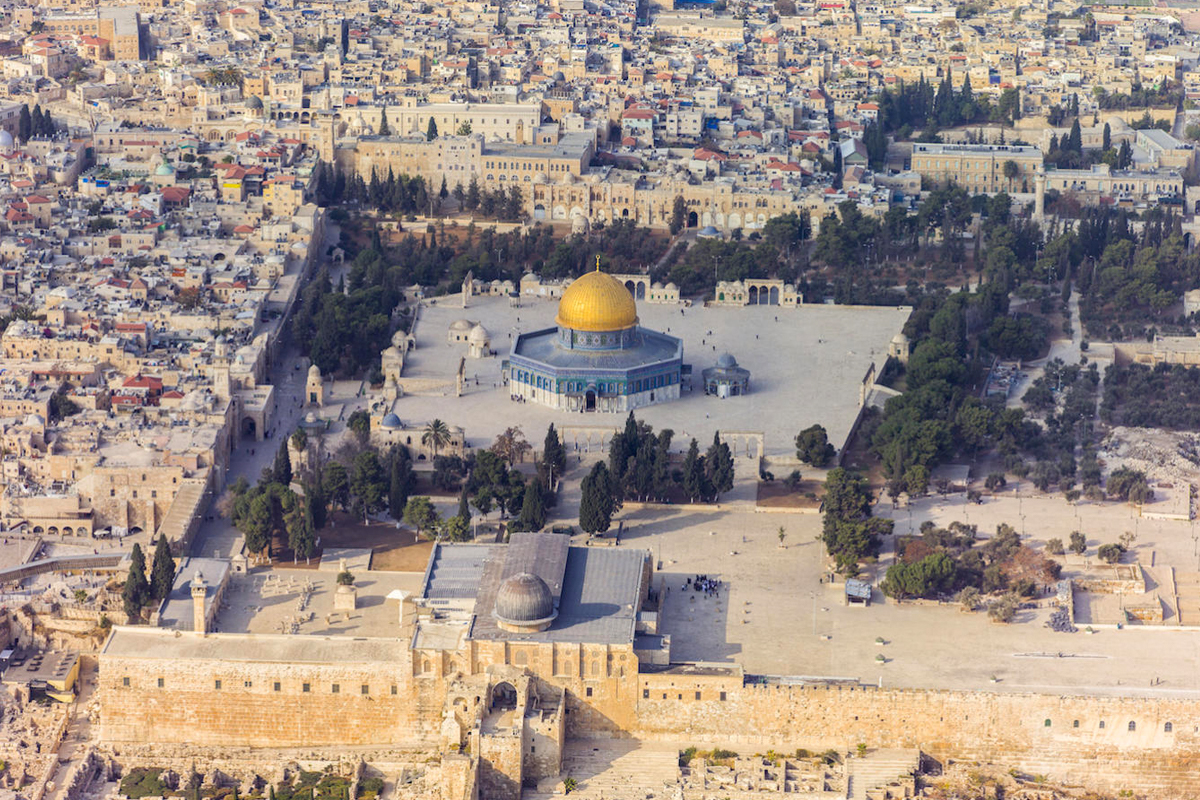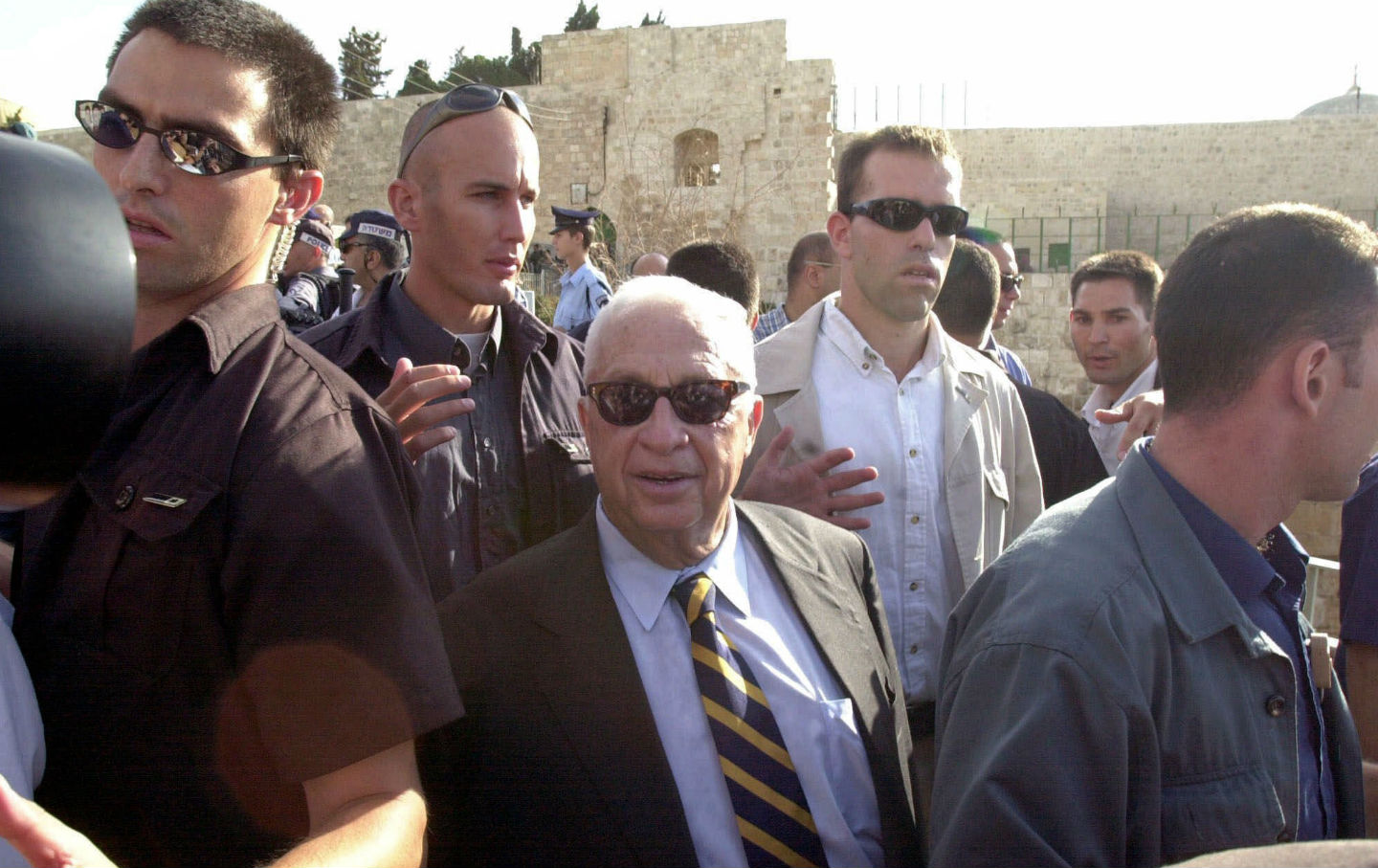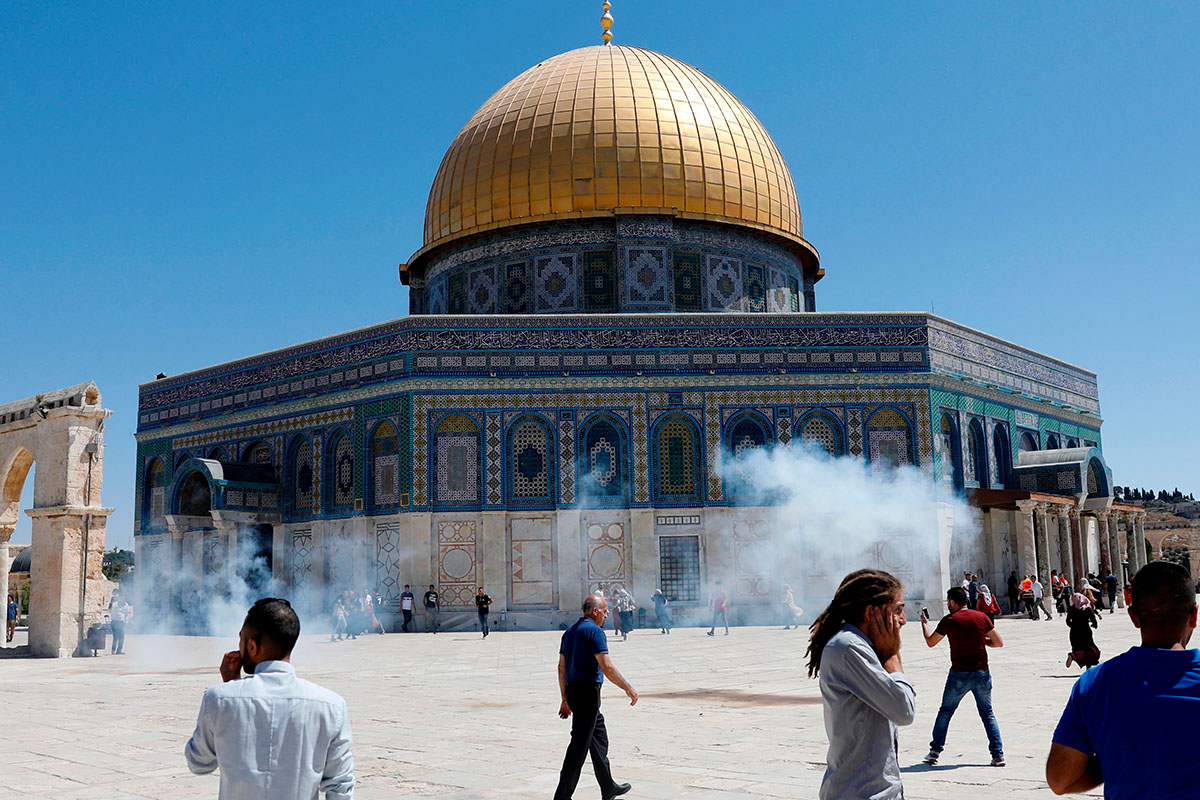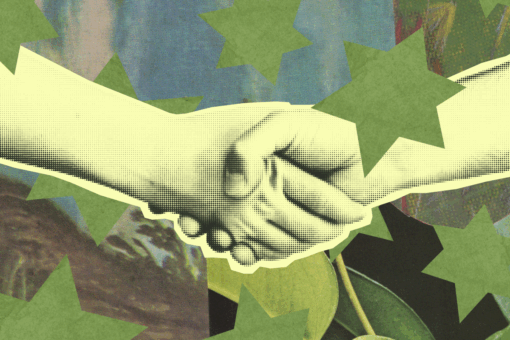Jerusalem is a vitally important city for both Israelis and Palestinians. Israeli Jews view it as their undivided capital, full of millennia of Jewish history. The Temple Mount in Jerusalem’s Old City is Judaism’s holiest site. The Temple Mount is also the third holiest site in Islam, called the Noble Sanctuary, and is the site of the Al-Aqsa Mosque.
That’s why any conflict in the city is so deeply fraught. Let’s get into it.
What is the Temple Mount?
The mount is the site from which Muslims believe Muhammad ascended to heaven and where the two Jewish Temples once stood.
According to Jewish tradition (via My Jewish Learning), it is the site where Jews believe Abraham demonstrated his devotion to God in the Binding of Isaac. It is also the location of both ancient Jewish Temples. The first, built by King Solomon, was destroyed by the Babylonians in 586 BCE. The second was built 70 years later and stood for nearly 600 years before it was destroyed in 70 CE by the Roman Empire. Jews continue to mourn the destruction of both Temples on the fast day of Tisha B’Av. According to Jewish tradition, a third temple will be built on the site during the messianic age.
According to Islamic tradition, the Temple Mount is the site of Muhammad’s ascent to heaven in the seventh century. Today, the mount is home to the Al-Aqsa Mosque, the third holiest site in Islam, and the gold-topped Dome of the Rock, one of the most recognized symbols of Jerusalem.
What is the Al-Aqsa Mosque?
The Al-Aqsa Mosque is the name of the mosque that sits atop the Temple Mount in Jerusalem. In a narrow view, it refers to just the mosque, but it can also refer to the Dome of the Rock, the Gates of the Temple Mount, and the four minarets. Muslims consider the entire compound to be a holy site.

The mosque can hold up to 5,000 worshippers, and is believed to have been completed in the early eighth century. The Dome of the Rock is not a mosque, but an Islamic shrine.
Who controls the Temple Mount?
In 1967, Israel captured East Jerusalem (also called the Old City of Jerusalem) from Jordan during the Six-Day War. Israel annexed the territory, though that has not been internationally recognized.
Under a status quo arrangement, the Jerusalem Islamic Waqf controls the Al-Aqsa Mosque area. Via My Jewish Learning: “A waqf is a charitable trust recognized by Islamic law. Jordan, which had controlled eastern Jerusalem and the Islamic holy sites prior to 1967, continued to exercise a special guardianship over the mount, an arrangement later codified in the 1994 Israel-Jordan peace treaty, under which Israel ‘respects the present special role of the Hashemite Kingdom of Jordan in Muslim Holy shrines in Jerusalem.’ Overall security for the site, including entry to visitors and worshippers, rests with Israeli security forces.”
Who can access the Temple Mount?
Anyone, but the Dome of the Rock is restricted to Muslims. Non-Muslims must enter through the Mughrabi Gate, located near the Western Wall plaza.
Can Jews visit the Temple Mount?
Yes, they can visit during limited hours, but they are prohibited by Israeli law from praying there. Instead, Jews pray at the Western Wall, or the Kotel, the remnants of a wall that originally was part of the Second Temple.
Orthodox Jewish law prohibits Jews from setting foot in the “Holy of Holies,” the innermost sanctum of the Temple, but there are plenty of Jews who are fine with visiting the larger Temple Mount site and saying prayers there. The reason Jewish visiting hours to the site are limited, and Jewish prayer is prohibited there by Israel, is out of respect for the Waqf and the Muslim presence there.
A group of religious Jewish Israelis has agitated for expanded Jewish rights on the Temple Mount, which has sparked protest among Palestinians.
Can you explain past crises at the Temple Mount?
Let’s do a quick rundown:
1929 Palestine Riots
Palestine Riots (also called the 1929 Massacres, Western Wall Riots, or the Buraq Uprising) started on August 15, when a group of Jews marched to the Western Wall, shouting “the Wall is ours” and singing what would eventually become Israel’s national anthem, “Hatikvah.” Rumors started swirling that they were attacking local Arabs. Then, a young Sephardic Jew was stabbed to death (possibly unrelated to the tensions); his funeral became a huge anti-Arab demonstration.
On August 23, Arabs converged on Jerusalem, spurred by fears that Jews were going to try and claim the Western Wall. They started to attack Jews in the Old City, and violence began to spread. On August 24, the Hebron Massacre occurred. As a result of hearing reports of Jews massacring Arabs, Arabs attacked Hebron’s Jewish quarter, killing between 65 and 68 Jews. Over the course of the week of riots, 116 Arabs (possibly higher) and 133 Jews were killed.
1948 Arab-Israeli War
In December 1947, the Arab Siege of Jerusalem began, also known as the Battle for Jerusalem. The UN Partition Plan had Jerusalem under international rule, but fighting quickly broke out in the city. The intention in December was to isolate the 100,000-ish Jewish residents of the city. Jordanian forces’ goal was to conquer Eastern Jerusalem (including the Old City).
During the war, Jordan succeeded in capturing the Old City and eastern Jerusalem, and in April 1950, annexed eastern Jerusalem to Jordan.
The Six-Day War of 1967
In 1967, Israel took control of the Old City of Jerusalem, including the Temple Mount.
Soldiers erupted in religious celebrations at the Western Wall and on the Temple Mount. Paratroopers raised the Israeli flag on top of the Dome of the Rock, but Moshe Dayan (then Israel’s defense minister) ordered it taken down. Soon after, Dayan promised the Waqf that Israel would not interfere.
1990 Temple Mount Riots
Also called “Black Monday.”
A fringe Jewish group, “the Temple Mount Faithful,” tried to lay a cornerstone for a new temple. Palestinian Muslims violently protested.
Per JTA’s reporting at the time: “The worst rioting in years erupted Monday in the Temple Mount area of the Old City, leaving at least 19 Arabs dead and well over 100 people wounded, including Jews worshiping at the Western Wall. Police said at least 3,000 Arabs participated in the riots, which followed several days of mounting unrest and tension in and around Jerusalem. The violence was described as the worst since Israel captured the Old City in 1967.”
2000 visit by right-wing Israeli politician Ariel Sharon

On September 28, 2000, opposition leader Ariel Sharon visited the Temple Mount, sparking riots and protests. The Second Intifada began — lasting until 2005 — and Israel was shaken by suicide bombings, rocket attacks and other types of attacks. Israel met this with deadly force. In over five years, around 1,000 Israelis and 3,000 Palestinians were killed. Skepticism around the peace process grew.
2015 “Stabbing Intifada”
The “stabbing intifada” — when Palestinians tried (and sometimes succeeded) to kill Israeli civilians with knives — began, partly, when rumors started circulating that the Israeli government planned to destroy the mosque. Here’s a timeline to the lead-up to the violence.
What’s been happening in 2021?
Via the Jewish Telegraphic Agency:
For weeks, Palestinians in Jerusalem have been fighting with Israeli police and crowds of far-right Jews.
This week marks the end of Ramadan, which sees thousands of Palestinians coming to Al-Aqsa and the Old City to pray and gather. Monday was also Jerusalem Day, when Israeli Jews celebrate the Israeli reunification of Jerusalem in 1967. Every year, on Jerusalem Day, a crowd of right-wing Jews marches through the Old City, and has historically chanted racist slogans.
Palestinians have been protesting in the Old City for weeks. First, they opposed barriers that Israeli police said they erected for crowd control, but which prevented Palestinians from gathering at night, when Muslims break their daily Ramadan fast. Then, following a string of Palestinian attacks on Jews a couple weeks ago, far-right Jews marched through the city and fought with Palestinian protesters.
Over the past few days, those fights escalated, and Israeli police repeatedly stormed the Temple Mount, which Muslims revere as the Noble Sanctuary. Hundreds of Palestinians and dozens of Israeli police officers have been injured.



